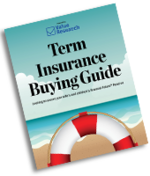How would I build the debt component of an overall portfolio? If one has already invested Rs 3 lakh in Public Provident Fund (PPF) and Senior Citizens Saving Scheme (SCSS), then what other options should one consider?
- Nirmal
I would say that there are different levels of fixed-income investing. One is the foundational part of your portfolio, which is absolutely risk-free. For this, many people have PPF and fixed deposits (which can be your emergency fund). If one has invested 50 per cent in equity and 50 per cent in these fixed-income investments, then one can also, for simplicity, consider these investments as the long-term, fixed-income portfolio for retirement.
Generally, Value Research has held the view that for your long-term fixed-income investment, avoid investing in PPF because it is a very long-term recurring deposit or it can be looked as an SIP that yields fixed income. I feel it's better to take chances in equity instead of doing a 15-year -long SIP in fixed income, as equity turns out to be a superior performer over any 15-year time period. Despite many upheavals that we have seen, equity ends up doing much better than what PPF would deliver. Having said that, once you have accumulated your money in PPF for historic reasons, then I think you should hold on simply because the returns from PPF are tax-free and absolutely safe.
As PPF and SCSS are sovereign guaranteed, these are the safest instruments that an investor can aspire for in India. Further, they give you reasonable returns as compared to other such fixed-income alternatives. So, safety, coupled with such returns, makes them worthwhile. But these come with an upper limit to maximum contribution like Rs 1.5 lakh p.a. in PPF and Rs 15 lakh in SCCS. Further, the return on SCSS is taxable.
For a long-term fixed-income investor who is not looking to derive periodic returns, it is always good to invest in a manner that you don't have to pay taxes on the money that you earn. So for this reason, I would say that one can consider high-quality fixed-income funds. The advantage is that once you invest in them, all the accumulations will be tax-sheltered until you need that money. Even if you take out a part of that money, only the gain component will be liable for taxation. Therefore, I would say that first build your debt portfolio with PPF and SCSS and after that, venture in liquid and short-duration funds.



